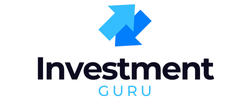Buying a home often comes with one big hurdle—high monthly mortgage payments, especially when interest rates are climbing. To make payments more manageable in the early years, lenders sometimes offer temporary rate buydowns. Two of the most common are the 2-1 buydown and the 3-2-1 buydown. While they sound complicated, the math behind them is surprisingly simple once you break it down.
With a 2-1 buydown, your interest rate is reduced by 2% in the first year and 1% in the second year before returning to your full note rate in year three. A 3-2-1 buydown takes it a step further, lowering your rate by 3% the first year, 2% the second, and 1% the third, with the full rate starting in year four. Both options can mean significant savings upfront—but they also come with trade-offs that every buyer should understand.
In this article, we’ll walk through both buydown options using straightforward math examples so you can see exactly how much you’d pay each year. We’ll also cover who benefits most from these arrangements, when they make financial sense, and what risks you should keep in mind.
Whether you’re a first-time homebuyer worried about budgeting or a homeowner considering refinancing, this guide will give you a clear picture of 2-1 vs 3-2-1 rate buydowns—without the jargon.
Table of Contents
What Is a Mortgage Rate Buydown?

A mortgage rate buydown is a form of financing incentive where the buyer (or sometimes the seller or builder) pays a lump-sum fee upfront to temporarily lower the borrower’s interest rate for the first few years of the loan. This makes the early monthly payments more affordable, giving borrowers flexibility as their income grows or they adjust to new financial obligations.
Unlike a permanent buydown—which lowers the rate for the life of the loan—a temporary buydown usually expires after a few years, and the rate steps back up to the note rate. According to Investopedia, these structures are common in higher-rate environments when buyers are hesitant to commit to large payments.
The Difference Between 2‑1 and 3‑2‑1 Rate Buydowns
When comparing rate buydown 2‑1 vs 3‑2‑1 explained, the names correspond to how much the rate drops over time:
- 2‑1 Buydown: The rate is reduced by 2% in year one, 1% in year two, and reverts to the full note rate in year three onward.
- 3‑2‑1 Buydown: The rate is reduced by 3% in year one, 2% in year two, 1% in year three, and reverts to the full note rate in year four onward.
| Buydown Type | Year 1 | Year 2 | Year 3 | Year 4+ |
|---|---|---|---|---|
| 2‑1 Buydown | -2% from note rate | -1% from note rate | Standard note rate | Standard note rate |
| 3‑2‑1 Buydown | -3% from note rate | -2% from note rate | -1% from note rate | Standard note rate |
Simple Math Example: 2‑1 vs 3‑2‑1 Rate Buydowns
Let’s compare both options with simple numbers. Assume:
- Loan amount: $400,000
- Term: 30 years fixed
- Note rate: 6.5%
Baseline Monthly Payment at 6.5%
At a 6.5% interest rate, the principal and interest (PI) payment is roughly $2,528 per month.
2‑1 Buydown Payments
- Year 1: Rate = 4.5% → Payment ≈ $2,027
- Year 2: Rate = 5.5% → Payment ≈ $2,271
- Year 3–30: Rate = 6.5% → Payment ≈ $2,528
3‑2‑1 Buydown Payments
- Year 1: Rate = 3.5% → Payment ≈ $1,796
- Year 2: Rate = 4.5% → Payment ≈ $2,027
- Year 3: Rate = 5.5% → Payment ≈ $2,271
- Year 4–30: Rate = 6.5% → Payment ≈ $2,528
Total Buyer Savings (Early Years)
| Buydown Type | Year 1 Savings | Year 2 Savings | Year 3 Savings | Total Early Savings |
|---|---|---|---|---|
| 2‑1 Buydown | $501/mo × 12 = $6,012 | $257/mo × 12 = $3,084 | None | $9,096 |
| 3‑2‑1 Buydown | $732/mo × 12 = $8,784 | $501/mo × 12 = $6,012 | $257/mo × 12 = $3,084 | $17,880 |
As you can see, the 3‑2‑1 buydown almost doubles the cash flow savings versus the 2‑1 option. However, it also costs more upfront to fund because the lender or seller must collect the difference in advance.
Who Typically Pays for the Buydown?
The buydown funds—sometimes called a “subsidy account”—are usually paid upfront at closing. This can come from:
- Homebuyer: As a tool to lower payments during early years.
- Home seller: As a seller concession to entice buyers in a competitive market.
- Homebuilder: Often as part of marketing packages to make new communities more affordable.
- Lender: With certain promotions, though it is less common.
The Consumer Financial Protection Bureau (CFPB) cautions borrowers to ensure they fully understand how costs of a concession affect their negotiation power and overall deal.
Pros and Cons of 2‑1 vs 3‑2‑1 Buydowns
Advantages
- Lower payments for the first few years create breathing room in your budget.
- Can help you qualify for a home loan if you expect income growth soon.
- Potential to refinance before full payments begin if rates drop.
- Seller-funded buydowns reduce your upfront barrier to homeownership.
Disadvantages
- The buydown cost is not free; someone pays upfront.
- Payments will rise; you must prepare for the escalation.
- If you plan to sell quickly, you may not maximize the benefits.

How to Decide Between a 2‑1 vs 3‑2‑1 Rate Buydown
Choosing the right buydown depends on cash flow needs, seller concessions, and long-term housing plans. Here’s how to make the call:
- Check eligibility: Not all lenders or loan types allow buydowns. Conventional, FHA, and VA loans may have different guidelines.
- Estimate long-term plans: If you’ll move within 3–5 years, a 3‑2‑1 may align better since you benefit from max savings upfront.
- Run a breakeven analysis: Compare the upfront cost of the buydown against monthly savings. Make sure you’ll stay in the home long enough to recoup it.
- Negotiate with sellers: If inventory is high, negotiate seller-paid buydowns so the savings don’t come out of your pocket.
Tools like online mortgage calculators from Freddie Mac can help crunch exact numbers before deciding.
Step-by-Step: Setting Up a Rate Buydown
If you want to implement a buydown, follow these steps:
- Speak with your lender: Ask if they offer temporary buydowns and what the cost estimate would be for your loan.
- Get a written quote: Request a Loan Estimate form showing the subsidy account charge.
- Negotiate concessions: Present the buydown quote to the seller or builder and request them to cover it in lieu of a price cut.
- Confirm eligibility: Ensure the loan type (conventional, FHA, VA) allows for temporary buydowns under agency guidelines.
- Finalize at closing: The subsidy is funded at closing. The lender then manages the buydown, reducing your early payments.
Once complete, your servicing statement will reflect the lower payment due for the initial years.
FAQs on Rate Buydown 2‑1 vs 3‑2‑1 Explained
- What happens when the buydown expires?
Your payment increases to the standard note rate. Prepare your budget for this step-up. - Can I refinance during the buydown period?
Yes, you can refinance at any time. However, unused subsidy funds may not transfer. - Do buydowns affect loan approval?
Lenders typically qualify you based on the full note rate, not the reduced rate, to ensure you can afford the eventual payment. - Can VA loans use buydowns?
Yes, VA guidelines permit temporary buydowns under certain terms, often with builder or seller funding. - Is a buydown better than asking for a price reduction?
It depends. A price reduction lowers your balance permanently. A buydown offers temporary relief. Often, buyers prioritize short-term affordability. - Are buydown costs tax-deductible?
Per IRS rules, temporary buydown payments are generally considered prepaid interest, which may be deductible. Consult a tax advisor for specifics. - Do new construction builders often include buydowns?
Yes, builders frequently advertise buydowns to move inventory, especially in slowing markets. - What if my income doesn’t grow as expected?
You must still pay the higher installment later. Consider conservative budgeting before committing. - Is the 3‑2‑1 always better than the 2‑1?
Not always. While the 3‑2‑1 offers deeper savings, it costs more to fund. If the seller won’t pay, a 2‑1 may be the smarter negotiation. - Can I combine a buydown with other incentives?
Yes, you may combine temporary buydowns with permanent buydowns, lender credits, or discount points depending on lender policy.
Conclusion
When evaluating rate buydown 2‑1 vs 3‑2‑1 explained options, the numbers reveal a tradeoff between upfront subsidy and early payment relief. The 3‑2‑1 buydown creates greater first-year savings but requires a larger investment or concession. The 2‑1 is simpler, cheaper, and works well for those needing modest relief. By running the math, negotiating seller credits, and planning for payment increases, you can confidently select a strategy that matches your homeownership goals. Start by asking your lender for a rate buydown illustration today and compare both programs side by side before you sign.


